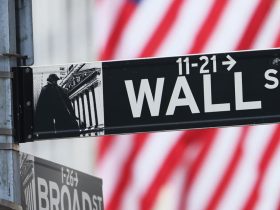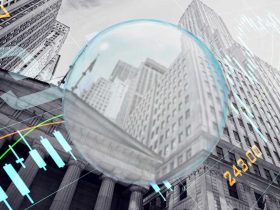Long-dated Treasury yields established new multi-year highs on Tuesday as traders pushed more market-implied rates toward 5% under the higher-for-longer theme.
What happened
-
The yield on the 2-year Treasury
BX:TMUBMUSD02Y
rose 3.8 basis points to 5.148% from 5.110% on Monday. Tuesday’s level is the highest since Sept. 21, the day after the Fed’s policy announcement reiterated that borrowing costs will likely remain higher for longer. Yields move in the opposite direction to prices. -
The yield on the 10-year Treasury
BX:TMUBMUSD10Y
jumped 11.9 basis points to 4.801% from 4.682% Monday afternoon. The 10-year rate ended at its highest level since Aug. 8, 2007, according to 3 p.m. Eastern figures from Dow Jones Market Data. -
The yield on the 30-year Treasury
BX:TMUBMUSD30Y
soared 14.2 basis points to 4.936% from 4.794% late Monday. The 30-year rate finished at its highest since Sept. 20, 2007.
What drove investors
Investors continued to sell off Treasurys — exacerbating the losses experienced by existing holders — largely because of continued resilience in the U.S. economy and investors’ demand for greater compensation to hold government debt to maturity.
Read: Rising Treasury yields are upsetting financial markets. Here’s why.
In data released on Tuesday, U.S. job openings rose to 9.6 million in August, just a month after falling to a more than two-year low — indicating the labor market remains strong.
More jobs-related data is on the way this week. The September ADP private sector employment report is set for release on Wednesday, followed by weekly initial jobless claims on Thursday. Friday brings the all-important nonfarm payrolls report for September.
Ahead of that, fed funds futures traders are pricing in a 72.3% probability that policy makers will leave interest rates unchanged at a range of 5.25%-5.5% on Nov. 1, according to the CME FedWatch Tool. The chance of a 25-basis-point Fed rate hike to a range of 5.5%-5.75% by the subsequent meeting in December is seen at 39.2%.
The central bank is mostly expected to keep the fed-funds rate target above 5% through the first half of next year.
In remarks made on Tuesday, Raphael Bostic, president of the Atlanta Fed, said further increases in interest rates probably aren’t necessary to bring inflation back down to prepandemic levels.
What analysts are saying
“As many investors remain sidelined in anticipation of an inflection point that reveals financial markets and the real economy won’t easily absorb the current magnitude of the backup in rates, there is little incentive to step in front of the selloff,” said BMO Capital Markets strategists Ian Lyngen and Ben Jeffery.
“We’ll be the first to acknowledge how tiresome it’s become waiting for the proverbial next shoe to drop. So much so that we’ve grown sympathetic to investors’ increasing willingness to buy into the no-landing narrative; after all, nothing has gone awry… yet,” they wrote in a note.
Read the full article here













Leave a Reply